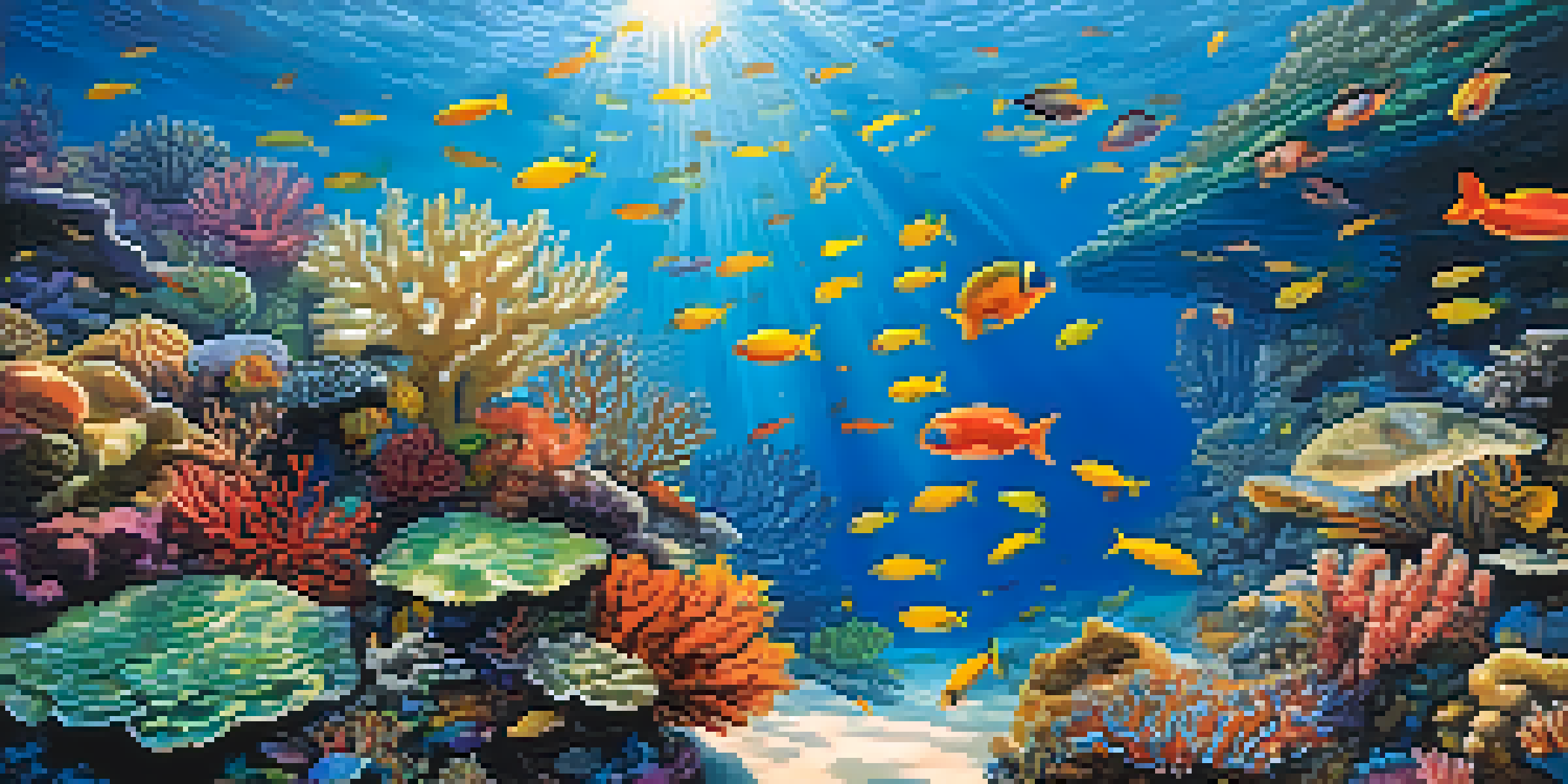Documentary Styles: The Shift from Informative to Immersive

Understanding Traditional Informative Documentaries
Informative documentaries have long been a staple of visual storytelling, focusing on delivering facts and insights straightforwardly. These films often feature expert interviews, historical footage, and a clear narrative structure that aims to educate the audience. Think of them as the textbooks of the film world, providing a wealth of information but often lacking emotional engagement.
Documentaries are a way of giving a voice to the voiceless and providing a platform for stories that are often overlooked.
Examples like 'The Blue Planet' or 'Planet Earth' illustrate this style beautifully, using stunning visuals and concise narration to inform viewers about the natural world. While they captivate with their imagery, the primary goal remains educational, helping viewers understand complex subjects without much personal connection.
However, as audiences have evolved, there’s been a growing desire for documentaries that not only inform but also engage on a deeper emotional level. This shift has led filmmakers to explore new methods of storytelling, paving the way for more immersive experiences.
The Rise of Immersive Documentary Styles
In recent years, immersive documentaries have gained traction, drawing viewers into the narrative rather than simply presenting information. Techniques such as first-person storytelling, virtual reality, and interactive elements invite audiences to experience the subject matter firsthand. This transformation is akin to shifting from reading about a place to actually visiting it, providing a richer, more impactful experience.

Films like 'My Octopus Teacher' exemplify this movement, as they allow viewers to connect intimately with both the filmmaker and the subject. By using personal narratives, filmmakers create an emotional bond, making the experience memorable and relatable. This shift not only enhances viewer engagement but also fosters a deeper understanding of the subject matter.
Evolving Documentary Styles
Documentaries are shifting from traditional informative formats to more immersive storytelling that engages viewers emotionally.
The immersive approach encourages audiences to feel as though they are part of the story, rather than just passive observers. This can lead to greater empathy and a more profound connection with the themes explored in the documentary.
Technology's Role in Shaping Documentary Styles
Advancements in technology have played a significant role in the evolution of documentary styles, particularly in creating immersive experiences. Tools like high-definition cameras, drones, and virtual reality allow filmmakers to capture and present their stories in ways that were once impossible. These innovations have transformed the storytelling landscape, making it more dynamic and engaging.
The best documentaries are those that leave you with more questions than answers.
For instance, virtual reality documentaries provide audiences with a 360-degree view of the environment, allowing them to feel as though they are stepping directly into the scene. This technology breaks the barrier between the viewer and the subject, offering a more profound experience and inviting them to explore the narrative actively.
As technology continues to advance, the possibilities for immersive storytelling will only expand, pushing filmmakers to innovate further. This ongoing evolution raises exciting questions about the future of documentary filmmaking and how it will continue to engage audiences.
The Impact of Audience Expectations on Documentary Styles
The rise of social media and streaming platforms has significantly changed audience expectations regarding documentaries. Viewers now seek more than just information; they crave stories that resonate with them on a personal level. This shift has prompted filmmakers to adapt their approaches, blending informative content with immersive storytelling techniques.
As a result, documentaries are increasingly designed to spark discussions and inspire action, rather than simply conveying facts. Audiences want to feel invested in the narrative, and filmmakers are responding by crafting stories that reflect contemporary issues and personal experiences. This new focus creates a sense of community around the viewing experience.
Technology Enhances Storytelling
Advancements in technology, such as virtual reality and high-definition cameras, are transforming how documentaries are created and experienced.
Moreover, the engagement factor has become crucial for documentaries to stand out in a crowded media landscape. Filmmakers are now challenged to develop unique narratives that captivate audiences and encourage them to share their thoughts, fostering a more interactive viewing environment.
Case Studies: Successful Immersive Documentaries
Several recent documentaries have successfully embraced the immersive style, showcasing the potential of this approach. 'The Social Dilemma' blends interviews with dramatized scenarios to illustrate the effects of social media on our lives. This method not only informs viewers but also engages them emotionally, prompting self-reflection and discussion.
Another standout example is 'Won't You Be My Neighbor?', which personalizes the story of Fred Rogers, allowing audiences to connect with his message of kindness and empathy. By weaving in personal anecdotes and emotional moments, the documentary resonates on a deeper level, making it memorable and impactful.
These case studies highlight how the immersive style can enhance the storytelling experience, creating a lasting impression on viewers. As filmmakers continue to experiment with narrative techniques, the possibilities for future documentaries are boundless.
Challenges in Crafting Immersive Documentaries
While immersive documentaries offer exciting opportunities, they also come with their own set of challenges. One major hurdle is balancing emotional engagement with factual accuracy. Filmmakers must ensure that while they create a compelling narrative, they do not sacrifice the integrity of the information being presented.
Additionally, immersive storytelling can sometimes lead to a more subjective viewpoint, which may alienate some viewers. Striking the right balance between personal narrative and broader context is crucial for maintaining credibility while still engaging the audience. This requires careful planning and a deep understanding of the subject matter.
Audience Expectations Shift
Today's viewers seek documentaries that not only inform but also resonate personally, prompting filmmakers to blend facts with emotional narratives.
Finally, the resources needed to produce high-quality immersive documentaries can be substantial. Filmmakers may face budget constraints or technical limitations that can hinder their creative vision. Navigating these challenges is key to successfully executing an immersive documentary that resonates with audiences.
The Future of Documentary Filmmaking: A Hybrid Approach
As we look ahead, it seems likely that the future of documentary filmmaking will embrace a hybrid approach, combining both informative and immersive styles. This evolution reflects the changing landscape of media consumption and the diverse preferences of audiences today. Filmmakers are increasingly recognizing the value of blending factual storytelling with emotional engagement to create a more rounded viewing experience.
By integrating elements from both styles, documentaries can cater to a wider audience while still delivering impactful messages. This hybrid model encourages filmmakers to innovate and experiment with their storytelling techniques, leading to fresh and exciting content that captivates viewers.

Ultimately, the future of documentaries lies in their ability to adapt to audience needs while maintaining their core purpose: to inform, inspire, and provoke thought. As filmmakers continue to explore new styles and technologies, we can expect to see even more engaging and meaningful documentaries emerge.